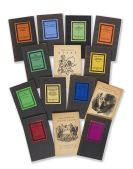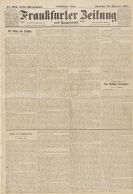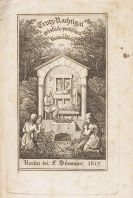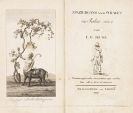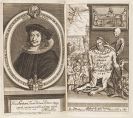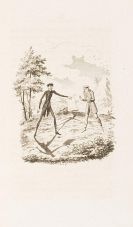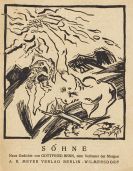
Clemens Brentano
Ehrenbreitste
1778 -
Aschaffenburg
1842
Clemens Brentano was born on 9th September 1778 in Ehrenbreitstein. After finishing school, Brentano studied mining sciences in Halle, and from 1798, medicine in Jena, although he failed to complete either course. At that time Jena was the centre of the early Romantic Movement, and home to the authors and poets G. Fichte, F. Wilhelm J. von Schelling, the brothers A. W. and F. Schlegel, L. Tieck and E. A. F. Klingemann. In addition, it was in Jena that Brentano met the representatives of Weimar Classicism, J. W. Goethe, C. M. Wieland and J.G. v. Herder.
Inspired by this environment, Clemens Brentano began his career as an author. He received an inheritance, which granted him the luxury of financial independence. In 1801 he began an intense friendship with Achim von Arnim, with whom he would later publish three-volume collection of folk songs "Des Knaben Wunderhorn", which was intended to include and bring together all German songs passed down orally since the Middle Ages.
In 1801 he published his first novel, "Godwi oder das steinerne Bild der Mutter". The subheading, "the novel run wild" is indicative of the Romantic technique of mixing different genres within the novel. "Godwi" thus also includes lyrical elements, like the re-interpretation of his "Zu Bacharach am Rheine", originally written in the style of a folk song, as a poem, which then became the Lore Lay.
In 1803 he married Sophie Mereau,, who died shortly after the birth of her child in 1806. Not long afterwards, Clemens Brentano married Auguste Bußmann, whom he divorced in 1812. Brentano moved frequently, living in Berlin, Bohemia and Vienna. Works written during this period include the historical drama, "Die Gründung Prags" (1812). In 1816, following an unhappy relationship with Luise Hensel, the daughter of a Catholic clergyman, Brentano converted to Catholicism, and radically changed his literary work.
In 1817, the "Geschichte vom braven Kasperl und dem schönen Annerl" was published, a story about an unhappy liaison with a dramatic ending. From 1818, whilst searching for a task to conform with his new religious outlook, Clemento recorded the visions of the stigmatised nun Anna Katharina Emmerick in Düren, producing a trilogy after her death. In the 1830s, Brentano wrote his later lyrical work, which is often associated with his relationship with the Swiss painter Emillie Linder, one of the numerous unhappy love affairs he conducted during this period. In 1838, Brentano’s fairy tale novel "Gockel, Hinkel und Gackeleia" was published.
Clemens Brentano died 1824 at Aschaffenburg.
Would you like to sell a work by Clemens Brentano?
Infos for seller
